Susanne Trick
A Normative Model of Classifier Fusion
Jun 03, 2021
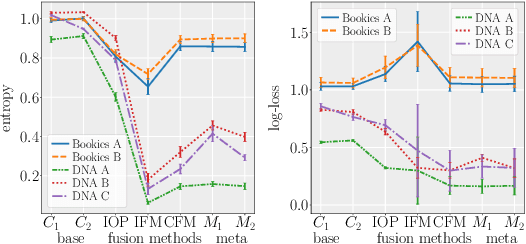


Abstract:Combining the outputs of multiple classifiers or experts into a single probabilistic classification is a fundamental task in machine learning with broad applications from classifier fusion to expert opinion pooling. Here we present a hierarchical Bayesian model of probabilistic classifier fusion based on a new correlated Dirichlet distribution. This distribution explicitly models positive correlations between marginally Dirichlet-distributed random vectors thereby allowing normative modeling of correlations between base classifiers or experts. The proposed model naturally accommodates the classic Independent Opinion Pool and other independent fusion algorithms as special cases. It is evaluated by uncertainty reduction and correctness of fusion on synthetic and real-world data sets. We show that a change in performance of the fused classifier due to uncertainty reduction can be Bayes optimal even for highly correlated base classifiers.
Multimodal Uncertainty Reduction for Intention Recognition in Human-Robot Interaction
Jul 04, 2019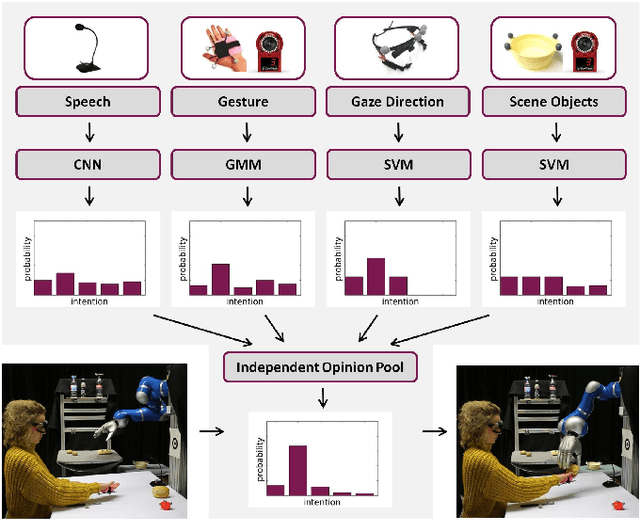
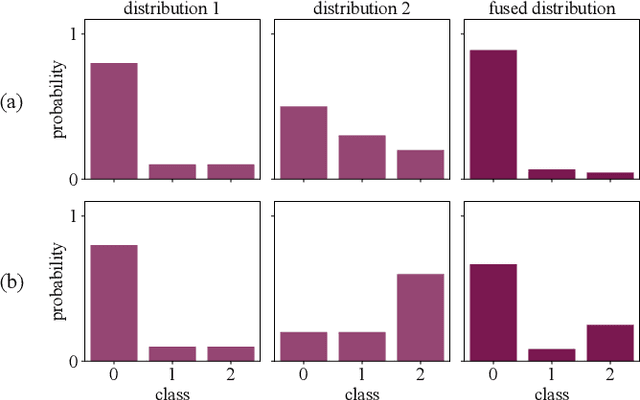
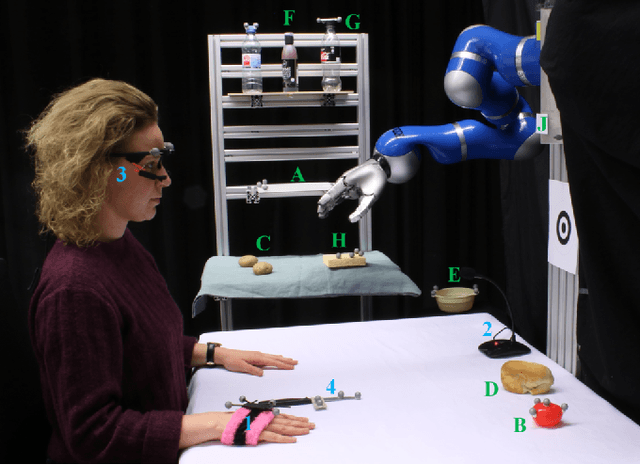
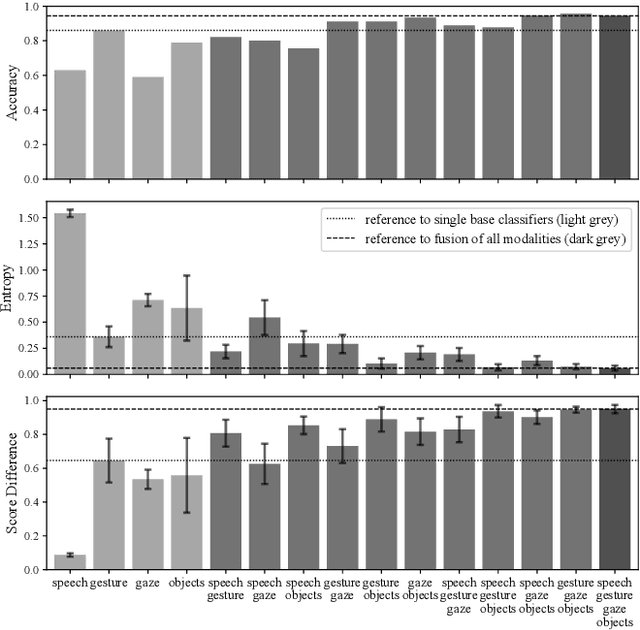
Abstract:Assistive robots can potentially improve the quality of life and personal independence of elderly people by supporting everyday life activities. To guarantee a safe and intuitive interaction between human and robot, human intentions need to be recognized automatically. As humans communicate their intentions multimodally, the use of multiple modalities for intention recognition may not just increase the robustness against failure of individual modalities but especially reduce the uncertainty about the intention to be predicted. This is desirable as particularly in direct interaction between robots and potentially vulnerable humans a minimal uncertainty about the situation as well as knowledge about this actual uncertainty is necessary. Thus, in contrast to existing methods, in this work a new approach for multimodal intention recognition is introduced that focuses on uncertainty reduction through classifier fusion. For the four considered modalities speech, gestures, gaze directions and scene objects individual intention classifiers are trained, all of which output a probability distribution over all possible intentions. By combining these output distributions using the Bayesian method Independent Opinion Pool the uncertainty about the intention to be recognized can be decreased. The approach is evaluated in a collaborative human-robot interaction task with a 7-DoF robot arm. The results show that fused classifiers which combine multiple modalities outperform the respective individual base classifiers with respect to increased accuracy, robustness, and reduced uncertainty.
 Add to Chrome
Add to Chrome Add to Firefox
Add to Firefox Add to Edge
Add to Edge